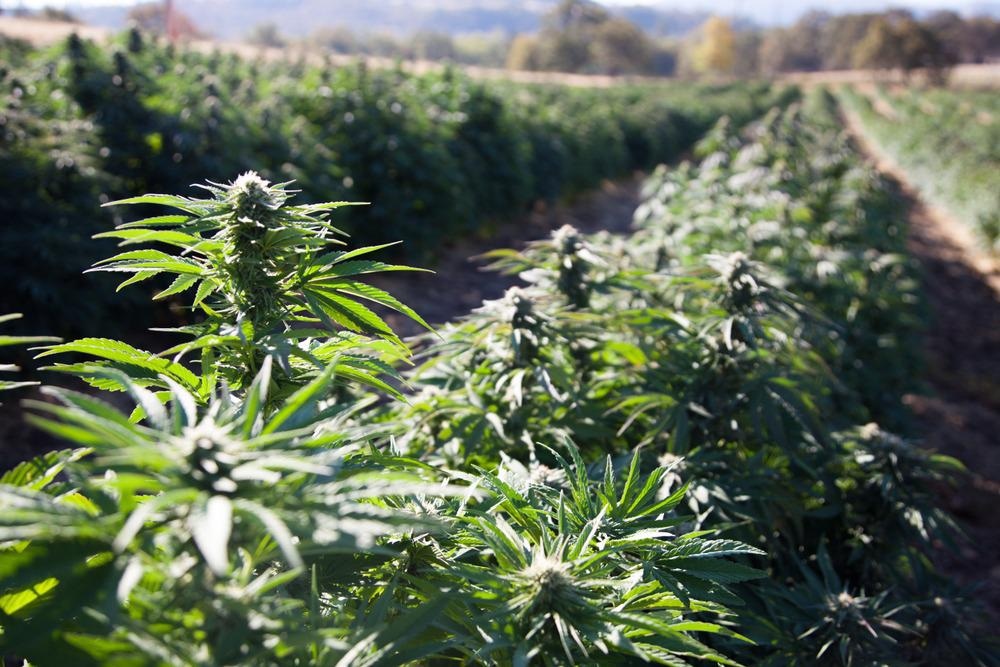There is a high demand for the increase in renewable energy sources to reduce our reliance on coal, oil, and natural gas, reducing the effects of climate change. One such renewable source is the production of energy through thermal degradation of biomass (organic matter, such as wood and plants).

Image Credit: Canna Obscura/Shutterstock.com
There are several types of methods for generating energy from biomass: direct combustion, gasification, slow pyrolysis, and fast pyrolysis. Each of these different methods are characterized by their parameters, such as temperature, heat rate, and residence time, and each work best with different types of biomass.
One of the fastest growing markets of biomass is the industrial hemp plant Cannabis sativa. L. as it is fast growing and has a short rotation period. These are ideal characteristics for biomass material; it enables a high amount of energy to be produced in a short period of time. The leaves, hurds (a by-product from the production of hemp fibers and seeds), and roots of this plant undergo thermal degradation by the slow pyrolysis method.
One of the current areas of research with slow pyrolysis is to increase the environmental sustainability of this process by finding applications for the reactions by-products, biochar, and pyrolysis liquids. Biochar has been found to be effective as a soil ameliorant but uses of pyrolysis liquids have proven more difficult to achieve.
The complex mixture of a vast array of chemical compounds found in pyrolysis liquids has been a key challenge in identifying possible applications. Qualitative and quantitative analysis of the composition of these distillates is essential in order to develop commercially viable applications.
To date, several analytical techniques have been used for the characterization of these by-products including, Fourier-transform infrared spectroscopy (FTIR), gas chromatography-mass spectrometry (GC-MS), liquid chromatography-mass spectrometry (LC-MS), and nuclear magnetic resonance (NMR) spectroscopy. However, most studies have focused on qualitative, and not quantitative information.
A recent study from the University of Eastern Finland determined the chemical composition and concentration of pyrolysis liquids using NMR spectroscopy.
Thermal degradation of the leaves, hurds (a by-product from the production of hemp fibers and seeds), and roots of industrial hemp was performed by slow pyrolysis separately. The pyrolysis liquids were separated into two fractions, water-based and bio-oil, by using two different condensation temperatures: 70 °C (water-based fraction) and 130 °C (bio-oil fraction).
1H NMR and 13C NMR measurements of the distillates from each area of the hemp plant were then taken using a Bruker Avance III HD 600 MHz spectrometer. Structural determination was performed using 2D NMR techniques and chemical concentrations were performed with Cubic Spline Baseline Correlation routine in the Bruker Topspin software.
Over 115 compounds were identified in the pyrolysis liquid samples. The bio-oil fractions were mainly composed of fatty acids, phenols, levoglucosan, triterpenes, and cannabidiol. Whereas the water-based fractions contained three main compounds: acetic acid, methanol, and propanoic acid.
Different areas of the hemp plant were found to contain varying concentrations of these compounds: the leaves contain the highest concentration of aromatic compounds (12.4 mM) in comparison to the hurds and roots (6.9 mM and 8.6 mM, respectively). Whereas, the hurds contained the highest concentrations of acetic acid, methanol, and propanoic acid.
This qualitative and quantitative analysis of the pyrolysis liquids from the slow pyrolysis of industrial hemp provides detailed information into the chemical composition of this by-product, which can be used to aid in the development of pyrolysis liquid applications.
NMR is the key technology for analysing unknown and complex plant matrices such as Cannabis. Without having the need for chemical separation prior to analysis and also being inherently quantitative without any need for compound specific reference substances this technology uniquely features the comprehensive decomposition of any mixture. With more than 60 years of groundbreaking innovation in the area of NMR Bruker still pushes the boundaries of what is possible.
Reference

This information has been sourced, reviewed and adapted from materials provided by Bruker BioSpin - NMR, EPR and Imaging.
For more information on this source, please visit Bruker BioSpin - NMR, EPR and Imaging.